Tesla cuts prices to boost demand
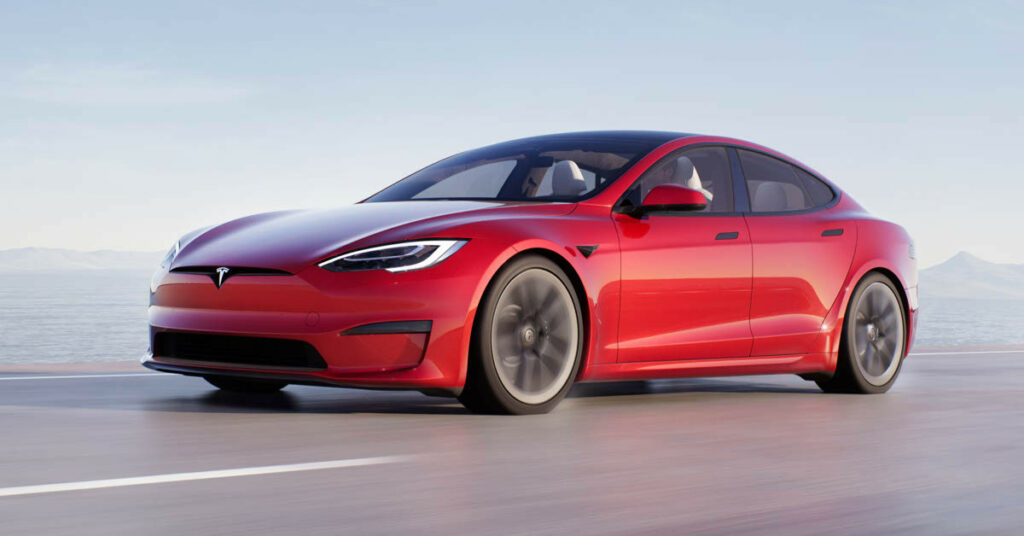
London ULEZ is expanding from 29th August 2023

London has an air quality problem. That’s why the Ultra Low Emission Zone (ULEZ) is expanding across all London boroughs from 29 August 2023 to help clear London’s air.
Poor air quality is not just a central London problem. In fact, the greatest number of deaths related to air pollution occur in outer London areas.
The ULEZ has already made a significant difference, helping to reduce harmful nitrogen dioxide pollution by nearly half in central London. But we need to act now to help the five million Londoners in outer boroughs breathe clearer air too.
Cars, motorcycles, vans, and other specialist vehicles (up to and including 3.5 tonnes) and minibuses (up to and including 5 tonnes) will need to meet the ULEZ emissions standards or pay a daily charge of £12.50 when driving within the zone, including the expanded area from 29 August.
More than four out of five vehicles already meet the standards. But, if you drive a petrol vehicle over 16 years old or a diesel vehicle over 6 years old, you need to check in case you’re affected. Use our simple online vehicle checker.
To support Londoners through the expansion, the Mayor of London’s scrappage scheme is providing financial assistance for those on certain low income or disability benefits. There is also help for London-based sole traders, businesses with up to 10 employees and registered charities. The scheme opens on 30 January 2023. For more information on the scrappage scheme and other support, visit our website.
The ULEZ will continue to operate 24 hours a day, 7 days a week, every day of the year except Christmas Day (25 December). We would prefer people use a vehicle that meets the emissions standards for essential journeys rather than pay the charge or, where possible, use public transport, walk or cycle.
Any money received from the scheme is reinvested into running and improving London’s transport network, such as expanding bus routes in outer London.

If you drive within the Congestion Charge zone in central London, you will also need to pay the daily Congestion Charge unless your vehicle has an exemption or is registered for a 100% discount. The Congestion Charge zone won’t be expanding.
If you need to pay the Congestion Charge or ULEZ daily charge, signing up for Auto Pay is the simplest way to do this. It’s now even easier with no annual registration fee from 30 January 2023. It means you will never forget to pay the charge and risk receiving Penalty Charge Notices for vehicles registered on your Auto Pay service.
UK ban on the sale of new petrol and diesel cars from 2030 explained
From 2030, all new cars that come on the market should be zero-emission and cannot emit any CO2. This is to ensure that by 2050, the transport sector can become carbon-neutral.
What will happen to current petrol/combustion engine cars? Can we still drive them after 2030?
Yes, you can still drive your current car. The new rules don’t mean that all cars on the road have to be zero emission by 2030. These rules don’t affect existing cars. If you buy a new car now, you can drive it until the end of its lifespan. But, because the average life span of a car is 15 years, we have to start in 2030 to aim for all cars to be CO2-neutral by 2050.
Will it still be possible to buy and sell second hand petrol/combustion engine cars after 2030, and get fuel for them?
Yes, this will all still be possible. However, the total cost of ownership – cost of fuel, maintenance, purchasing and insurance – might increase.
What type of zero-emissions cars will most people be driving?
The trend is mostly towards battery-electric vehicles, because the total cost of ownership is lower than the alternatives. For example, the production of hydrogen and e-fuels – made from electricity and hydrogen and turned into synthetic petrol – is more expensive as it requires a lot of electricity. However, batteries are heavy, which means some means of transport cannot easily be battery-powered – therefore hydrogen or e-fuels can be a good solution for ships, planes or heavy-duty vehicles.
Will electric cars be affordable?
It’s more cost efficient to use electric-powered vehicles as electricity prices are currently lower than petrol prices and they require less maintenance. So once purchased, the total cost of ownership of a battery-driven car is the same or cheaper than a petrol or diesel car. However, today electric cars are expensive. The new rules should encourage more competition and encourage manufacturers to invest in research and innovation into electric vehicles, which should drive the purchase price down.
Another issue is the second-hand car market, which has not yet developed for electric vehicles.
What will happen to the waste from electric batteries?
This will be addressed by other legislation – such as the renewable energy directive and new battery regulation – making sure the production process is CO2-neutral, does not have an adverse effect on the environment and that we are recycling the batteries. There is also a lot of work being done on innovating batteries and not just for cars.
Is there sufficient infrastructure for zero-emission cars? Is it only for people living in cities?
Manufacturers are currently working on cars with a range of more than 600 kilometres. Efficiency is improving so that cars don’t have to charge as often, or can charge with a regular plug at home. Parliament has also recently agreed its position for the alternative fuels infrastructure to provide for more ectric charging and hydrogen refuelling stations.
Best Electric Cars 2023
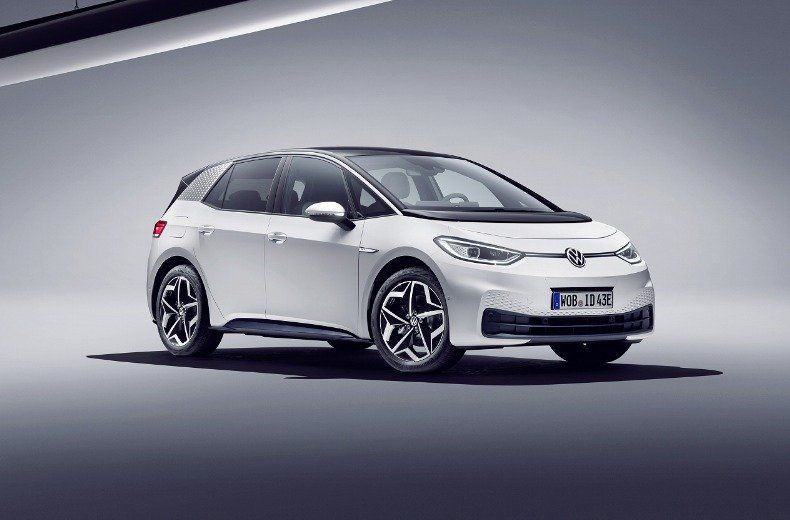
The Best Electric cars of 2023
With the ban on the sale of new petrol and diesel cars looming, we bring you our list of the best performing and best value electric vehicles (EVs) available in 2023.

Volkswagen ID.3
The ID.3 will change the way you think about Volkswagen. And, the brand hopes, it’ll change the way you think about affordable electric cars.
This contender is priced, shaped and designed right for the heart of the family segment of the growing EV sector and, unlike previous battery-powered Volkswagens, it’s completely new from the ground up.
The ID.3 is loaded with smart technology like it’s unique ID. Light that greets you as you make your approach. It also prompts you for upcoming navigation commands, indicates when you have a phone call coming in, and flashes red as a braking prompt when it senses an obstruction ahead.
For all of its tech and neat packaging, the most exciting selling point could be the price. The German manufacturers have delivered a family-sized all-electric vehicle that’s just as affordable as conventional internal combustion engine (ICE) options.
Price: From £35,835
Range: Up to 259 miles
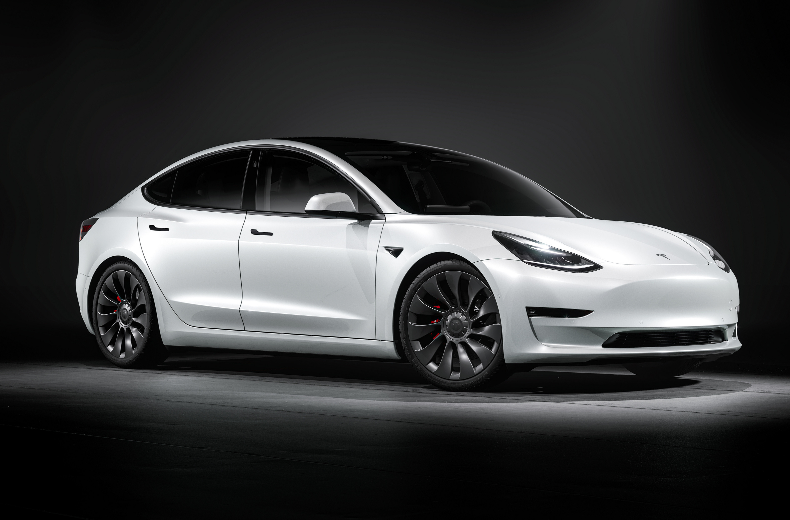
Tesla Model 3
Before the Model 3, Tesla earned a reputation for building new cars in a high price bracket, but this model is designed to shift more units to the masses.
The Model 3 comes with a sleek interior, similar to the Model X, and an enviable infotainment system that even boasts video gaming capability (while parked up of course), all at a more wallet-friendly price.
The dual motor vehicle offers all-wheel drive and boasts a super-strength body too. The panoramic all-glass roof not only looks great but resists four times its own weight – the equivalent of two fully-grown African elephants!
In February, Statista reported that it was the world’s most popular plug-in EV, with roughly 501,000 units sold in 2021.
Price: From £42,990
Range: Up to 374 miles
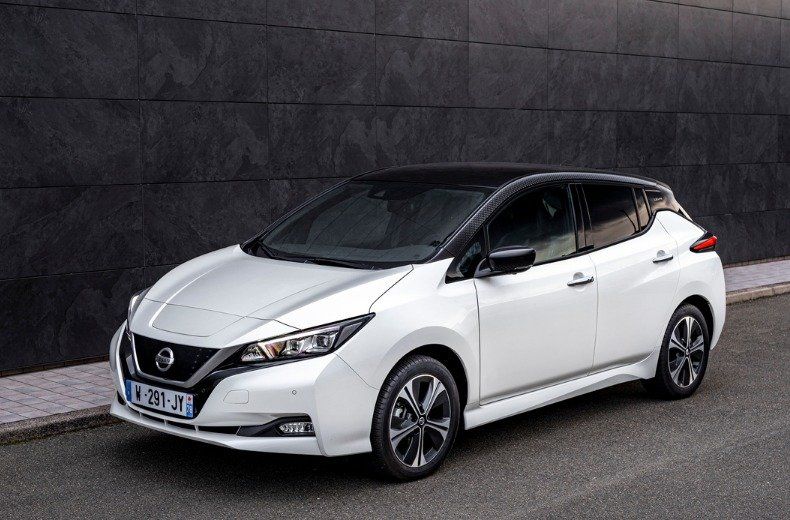
Nissan LEAF
Since its release in 2011, Nissan have continued to tweak charging times and driving range on the LEAF to offer a family car that’s both practical and cheap to run.
After more than a decade on the road, the vehicle comes with a few smart extras too. The Acenta trim includes a smart e-Pedal that allows drivers to start, accelerate, decelerate and stop using only the accelerator pedal.
The N-Connecta version adds an intelligent Around View Monitor providing a 360º picture of your surroundings with added Moving Object Detection.
Price: From £26,995
Range: Up to 239 miles
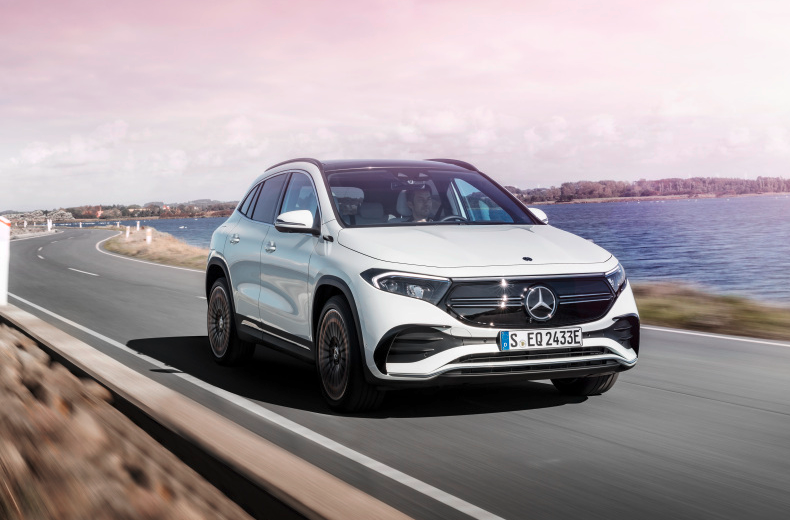
Mercedes-Benz EQA
Mercedes’ first fully electric compact SUV packs all the elegance we’ve come to expect from the German manufacturers into a new distinctive silhouette.
The suave vehicle will even charge from 10% to 80% in half an hour, when using a 100kW rapid charger.
If you prefer your luxury SUVs on the larger side, there’s always the option to pick up the keys to an EQC. The electric 4×4 offers a competitive driving range, smart driver assistance features and all-important added leg room.
Price: From £45,645
Range: Up to 264 miles
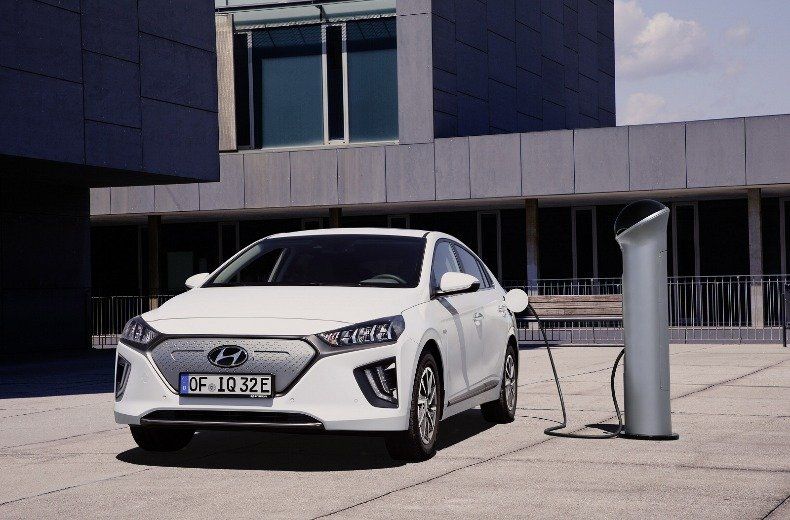
Hyundai IONIQ Electric
Hyundai believes that the Nissan LEAF has had its own way for far too long in the affordable part of the slowly growing full-electric car segment.
They’ve aimed this full-Electric IONIQ model directly at that car, as well as at other more recently introduced key segment models like the Volkswagen ID.3. On paper, this car certainly seems to offer a package that eco-minded buyers in this class will want to consider.
The IONIQ is instantly recognisable thanks to its distinctive dummy grille – a fascia in place of the usual metal radiator.
Inside, the South Korean EV offers all the mod cons you might expect, including a touch screen entertainment system and smart assisted driving technology.
New models are sold with a five-year unlimited mileage warranty and five annual vehicle health checks, making this affordable family car practical too.
Price: From £30,550
Range: Up to 193 miles
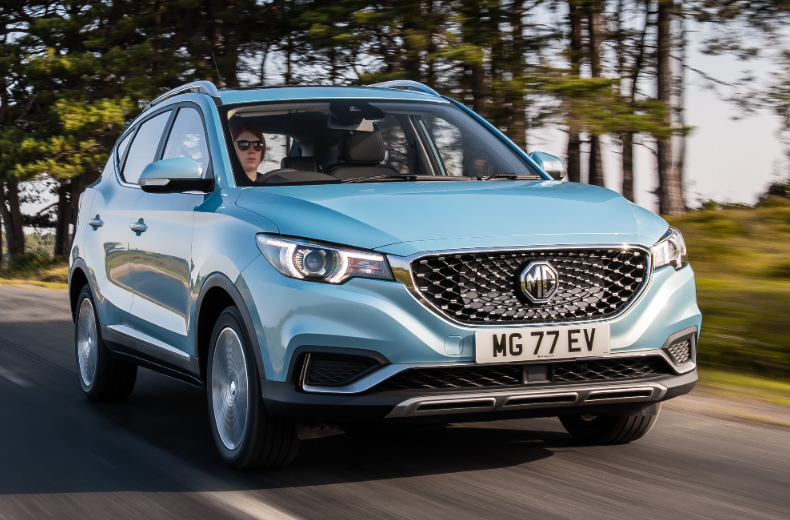
MG ZS EV
Looking for a compact family-sized full-electric model with zero emissions and the rapid responses characteristic of today’s EVs? Here’s the most affordable option you could consider, the MG ZS EV.
It’s an SUV, it’s sensibly priced and it’s well equipped. If ultimate driving range capacity isn’t a top priority and you’re buying on a budget, you might rather like it.
The car includes a spacious interior and a panoramic sunroof on the Exclusive trim for a pleasant and comfortable ride. There’s even a generous 470-litre boot.
An impressive seven-year warranty makes the ZS EV a tempting option for the money-conscious buyer.
Price: From £27,495
Range: Up to 273 miles
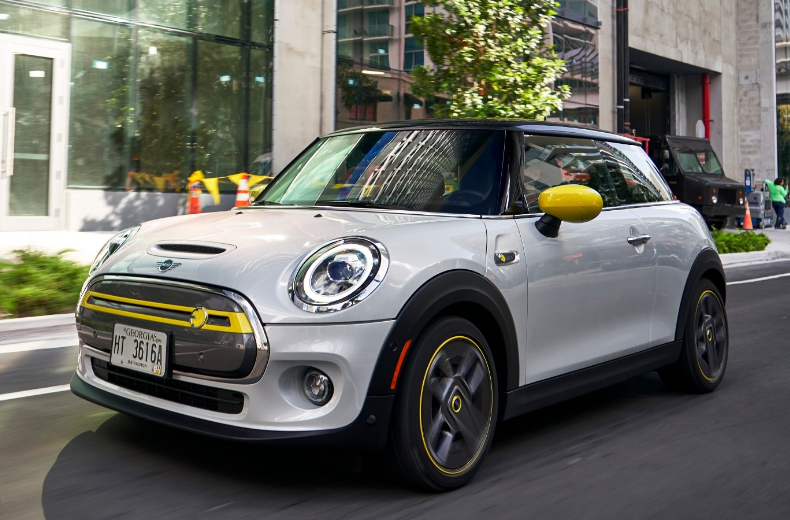
MINI Electric
If you’ve always wanted to own the iconic Mini but thought your next car should be electric, you can do both.
The cult classic takes 36 minutes to charge from 0% to 80% and looks almost identical to the conventional ICE-powered vehicle.
There are four trims available, with the full spec Collection offering wireless phone charging and automated parking. Most impressive of all could be the eight-year or 100,000-mile warranty.
Price: From £27,000
Range: Up to 145 miles
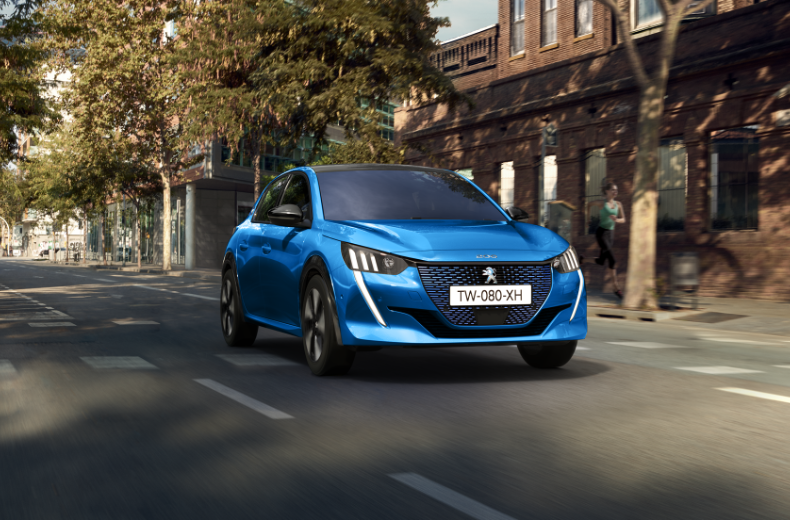
Peugeot e-208
Peugeot’s all-electric supermini looks snappy and covers a competitive 225 miles between charges. On-board technology includes a 3D instrument panel and a wireless charging cubbyhole for your phone.
If you’re a fan of the e-208’s slick exterior but crave a little more room, the e-2008 could be the car for you.
It has a similar range, interior, and good looks but drivers sit higher in Peugeot’s SUV counterpart and the boot is almost 50% larger – the ideal family car.
Price: From £28,260
Range: Up to 225 miles
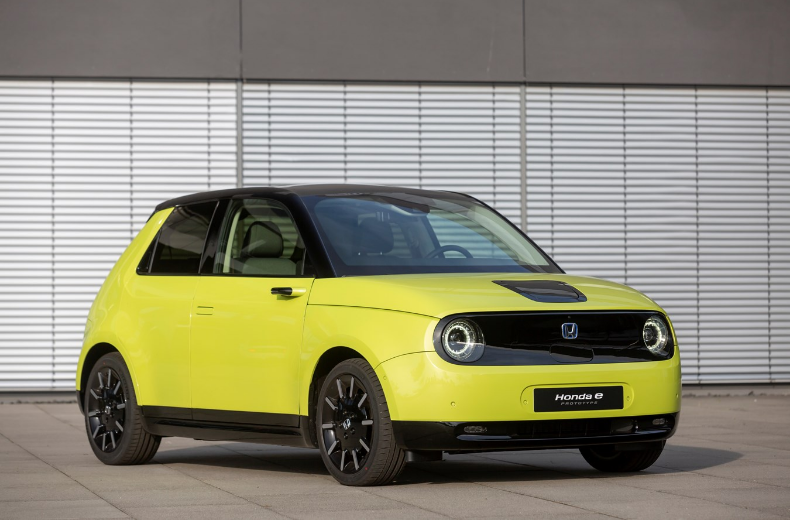
Honda e
If you want an electric car that feels different from a conventional ICE-powered vehicle, look no further than the e.
Honda’s supermini is designed to be a city run-around and is filled with charismatic touches that set it apart from the competition.
These include digital wing mirrors inside the cab and the distinctive dash where drivers and passengers can swap controls of the infotainment system with two 12-inch displays.
Overall, a charming and boldly designed car that will appeal to early adopters.
Price: From £34,365
Range: Up to 137 miles
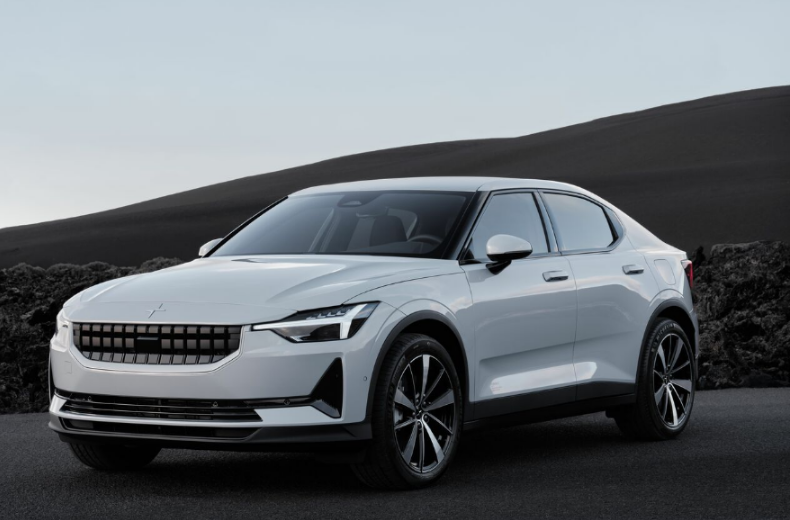
Polestar 2
You might not have heard of Polestar, the brand for uniquely designed electric cars is actually owned by Volvo’s parent company. Their five-door hatch is built for the premium EV buyer and has already earned a reputation for its good looks and impressive safety rating – Euro NCAP’s highest in 2021.
The impressive 335-mile range is only available on the long-range single motor model but does sound very tempting for frequent road trippers. With 360º cameras, Park Assist and unique frameless wing mirrors there are plenty of interesting extras too.
Price: From £40,900
Range: Up to 335 miles
